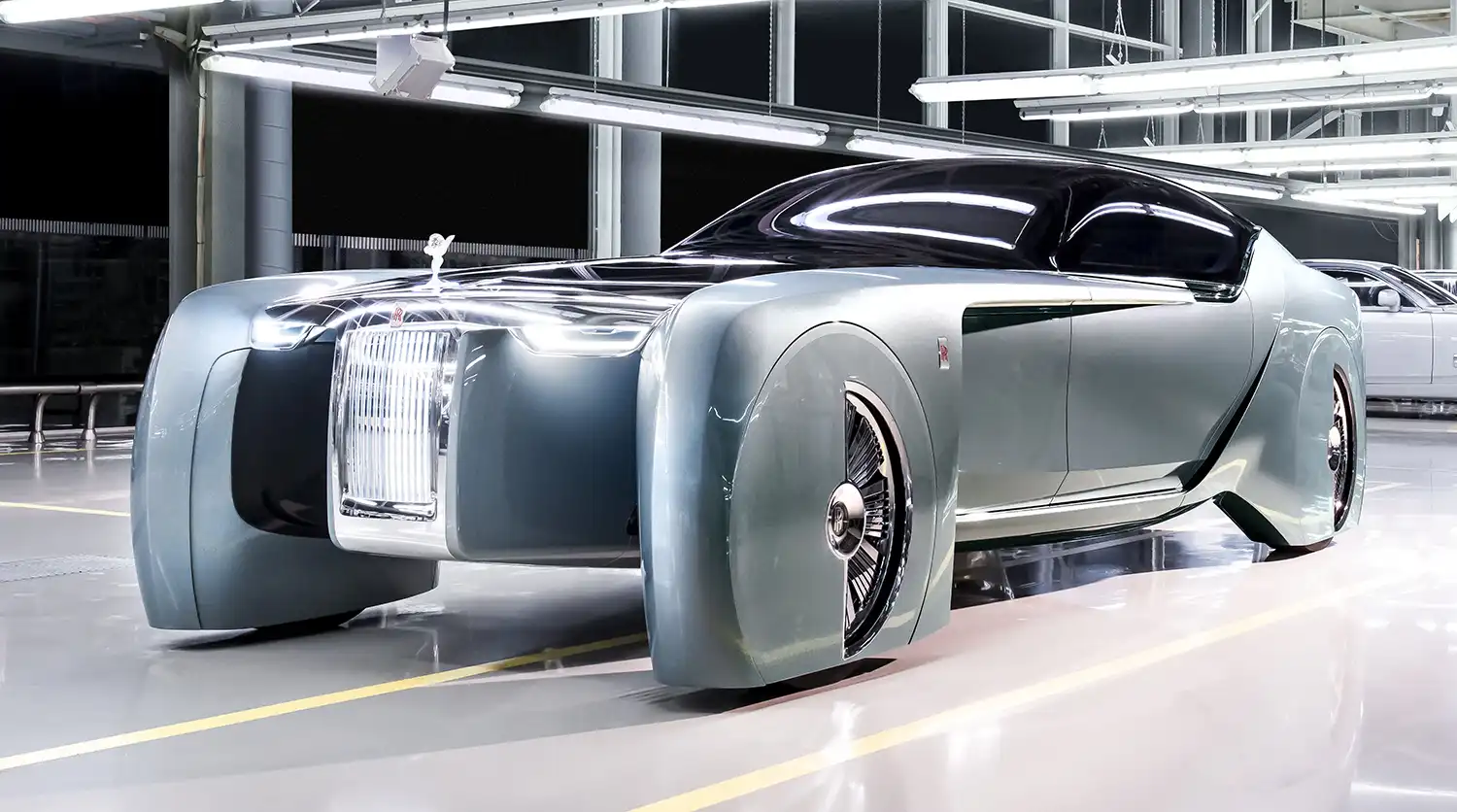
The Rolls-Royce ‘EX’ designation has a rich history, dating back to 1919 with 1EX, signifying experimental vehicles crafted to test new technologies and design concepts. This tradition continued for nearly four decades, culminating with 45EX in 1958. Following the marque’s renaissance at Goodwood in the early 2000s, Rolls-Royce revived this pioneering spirit with a new generation of EX cars, commencing with the unveiling of 100EX in 2004, just fifteen months after production began at their new home. Unlike mere concept cars, these Goodwood-era EX models are fully functional vehicles, serving as crucial testbeds for groundbreaking engineering, innovative drivetrains, and avant-garde exterior and interior designs. These experimental cars embody Rolls-Royce’s core philosophy: respecting their illustrious past while relentlessly focusing on the future of luxury mobility. Each EX model, identified by its unique designation and the exclusive red ‘Double-R’ badge, has contributed significantly to the marque’s modern success, with several directly influencing production models.
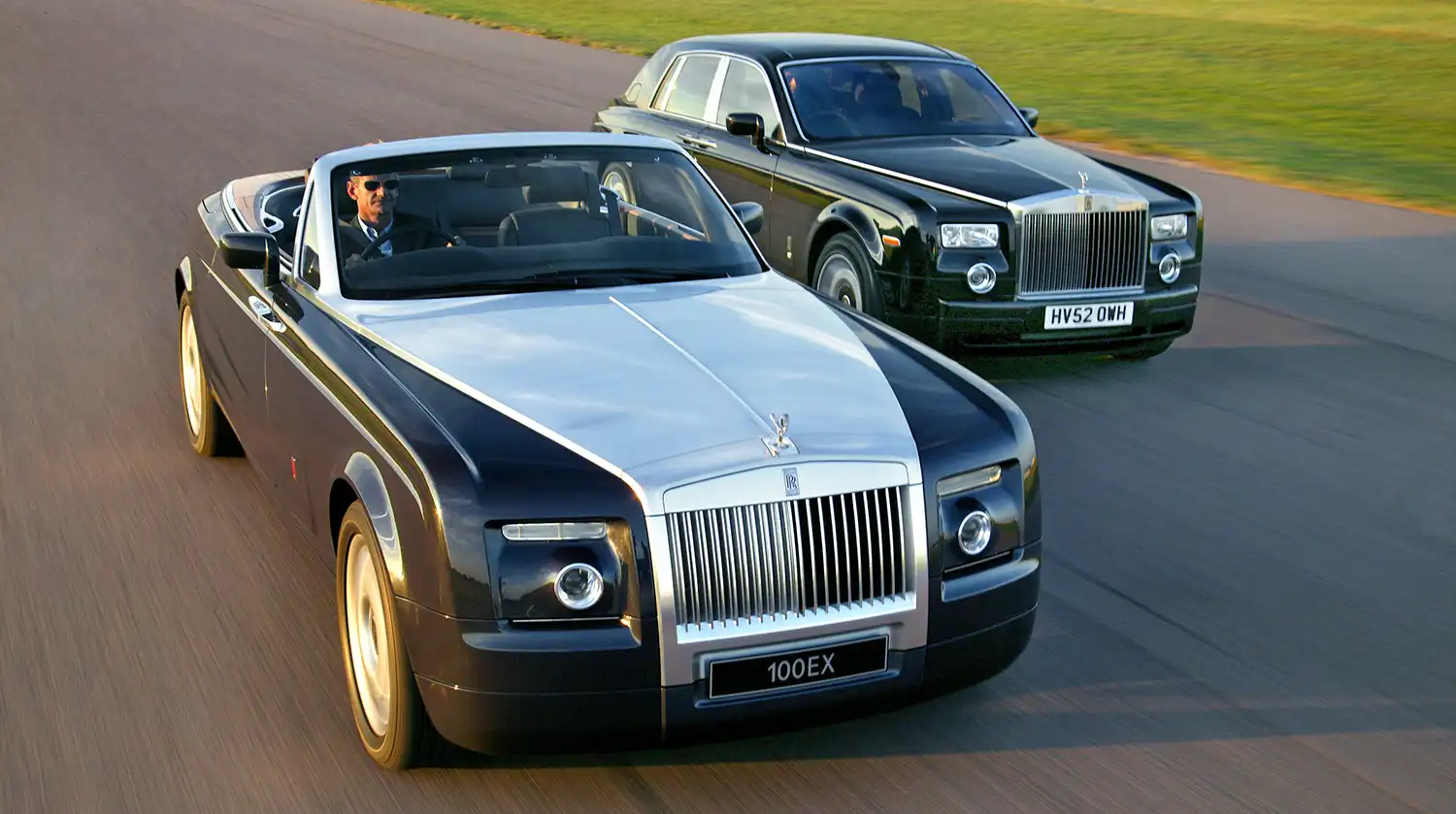
100EX (2004): A Nautical Drophead Vision: Unveiled at the 2004 Geneva Motor Show to commemorate Rolls-Royce’s centenary, the 100EX was a striking open-top, four-seat, two-door drophead. Built on a lightweight aluminum spaceframe, similar to the then-new Phantom VII but shorter and lower, the 100EX replaced the Phantom’s 6.75-liter V12 with a significantly larger 9-liter V16 naturally aspirated engine featuring 64 valves. Its exterior design drew inspiration from classic motor yachts, featuring a rising waistline and graceful lines. Nautical themes continued with bleached teak decking for the tonneau cover, luggage compartment lining, and rear passenger cabin. The rear showcased a distinctive boat-tail style, a design element that would later inspire bespoke coachbuilt creations. The innovative fabric roof, incorporating metallic threads and a cashmere/wool blend lining, folded into a compact space. The 100EX’s legacy is significant, as it directly evolved into the highly coveted Phantom Drophead Coupé, launched in 2007. Engine and Performance: The 100EX was powered by a unique 9-liter V16 naturally aspirated engine with 64 valves. While specific horsepower and torque figures were not detailed in the provided text, a V16 of this displacement would undoubtedly have produced substantial power and a unique auditory experience, befitting its experimental nature and the Rolls-Royce ethos of effortless performance.
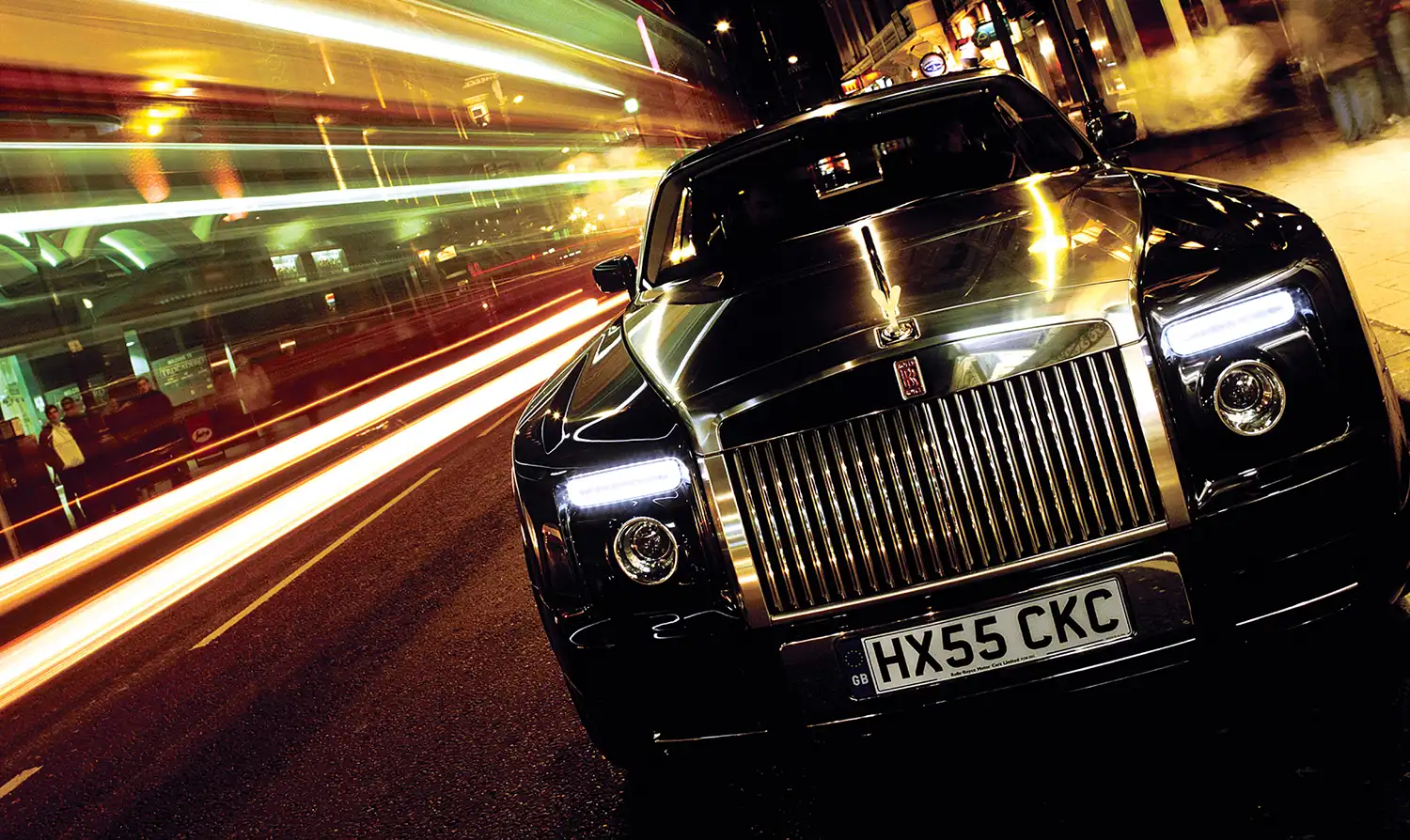
101EX (2006): Exploring Coupé Design and the Starlight Headliner: The 2006 Geneva Motor Show saw the debut of 101EX, the successor to 100EX. This experimental car explored potential design directions for a future coupé model, resulting in a full four-seat coupé with distinctive twin coach doors, a lower roofline, and shallower glass area compared to the Phantom VII. The Pantheon grille was subtly reclined and flowed into a brushed aluminum bonnet and windscreen surround. Built on the same aluminum spaceframe but shorter than the Phantom VII, and featuring carbon fiber composite bodywork, the 101EX aimed for a more driver-focused character, utilizing the proven 6.75-liter V12 engine. Its most enduring contribution was the introduction of the Starlight Headliner, comprising hundreds of fiber-optic ‘stars’. This feature became an instant sensation and remains a highly sought-after Bespoke option, offering almost limitless individualization. The 101EX served as the foundation for the Phantom (Fixed-Head) Coupé, launched in 2008, and its design DNA influenced the later Wraith grand tourer and the one-off Phantom Coupé ‘Sweptail’. Engine and Performance: The 101EX utilized the familiar 6.75-liter V12 engine from the Phantom VII. This engine, while its exact output for the 101EX isn’t specified here, in the Phantom VII produced substantial torque and refined power delivery, consistent with Rolls-Royce’s emphasis on effortless performance and a smooth driving experience.
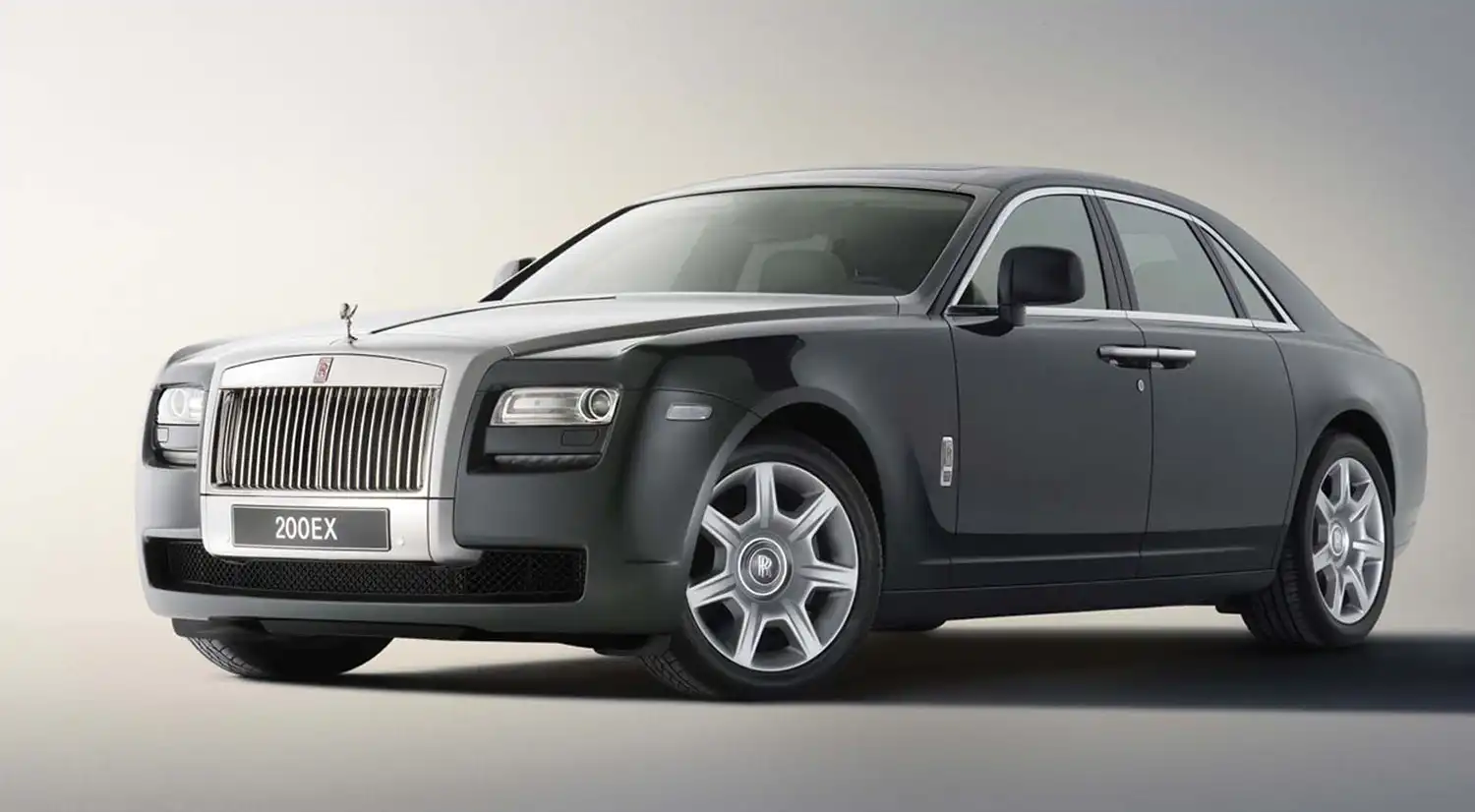
200EX (2009): The Blueprint for a New Generation of Saloon: Unlike its predecessors, the 200EX, unveiled at the 2009 Geneva Motor Show, was explicitly intended for production, serving as a design study for a contemporary four-door saloon. The design brief focused on creating a more dynamic and less formal Rolls-Royce to appeal to a younger audience, while retaining the marque’s hallmarks of effortless performance, refinement, quality, and confident design. The exterior featured large, uninterrupted surfaces with sculpted horizontal lines, powerful shoulders, and a more dynamic, inward-curving Pantheon grille. The interior was designed to be clear, spacious, and intuitive, with chrome accents highlighting key functions. The 200EX directly led to the first-generation Ghost, launched in 2010, which went on to become the most commercially successful model in Rolls-Royce’s history, shaping a new chapter for the brand. While specific engine details for the 200EX prototype aren’t provided, it clearly previewed the powertrain and performance characteristics that would define the production Ghost.
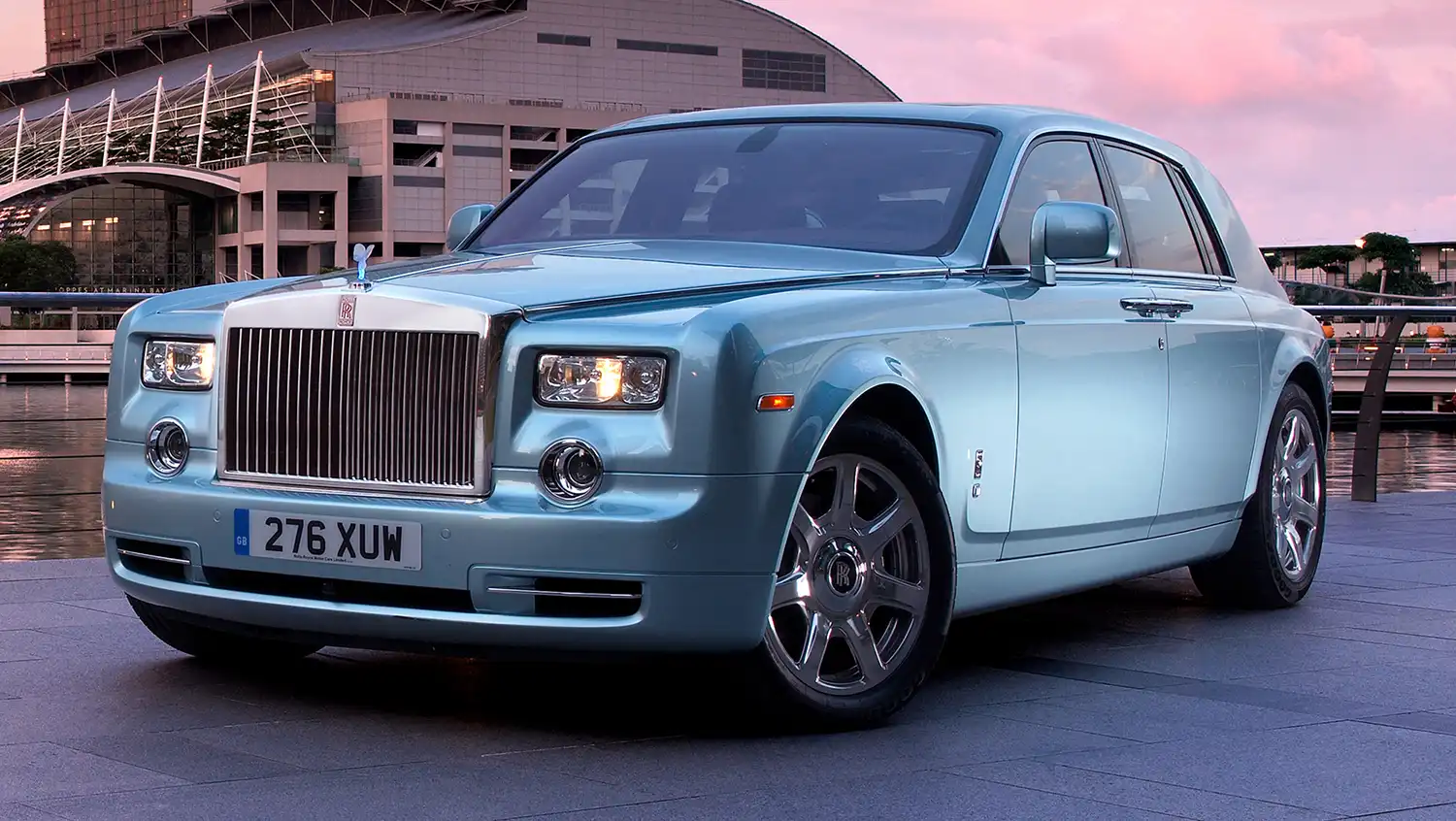
102EX (2011): Pioneering Electric Luxury: The 2011 Geneva Motor Show saw the debut of 102EX, also known as the Phantom Experimental Electric (EE). This one-off Phantom with a full electric drivetrain was a groundbreaking initiative to gather customer insights on alternative propulsion systems. As the world’s first super-luxury battery electric vehicle (BEV), 102EX embarked on a global tour, collecting feedback from owners, enthusiasts, and the media. Extensive laboratory testing assessed battery performance in extreme conditions. The real-world data gathered from 102EX was instrumental in the development of Spectre, fulfilling Charles Rolls’ early prophecy about the potential of electric power for luxury vehicles. Engine and Performance: The 102EX was powered by a full electric drivetrain, making it the world’s first super-luxury BEV. While specific power output and performance figures for the prototype are not detailed, its significance lies in its pioneering role in exploring electric propulsion for Rolls-Royce, directly contributing to the later development of the all-electric Spectre.

103EX (2016): Defining the Future of Luxury Mobility: In 2016, coinciding with BMW Group’s centenary and the end of Phantom VII production, Rolls-Royce unveiled its Vision Vehicle, 103EX, at London’s Roundhouse. This hand-built concept, crafted from advanced materials and powered by a zero-emissions powertrain, aimed to define the future of luxury mobility. It envisioned a completely personal, effortless, and autonomous experience, featuring a ‘Grand Sanctuary’ passenger cabin with an opulent sofa, a glass Spirit of Ecstasy, and a reimagined Pantheon grille. The 103EX also showcased experimental technology like ‘Eleanor,’ a digital assistant providing autonomous driving and a digital connection between car and owner, foreshadowing the Whispers app. Engine and Performance: The 103EX was powered by a zero-emissions all-electric powertrain, representing Rolls-Royce’s vision for the future of sustainable luxury. As a concept vehicle focused on future mobility, specific performance figures were less central than the demonstration of the electric drivetrain and autonomous capabilities.
Celebrating a Legacy of Innovation: The Goodwood-era EX experimental cars represent the first true ‘heritage’ models of this modern era for Rolls-Royce. These fully functioning vehicles have served as vital testbeds for new components, engineering approaches, and Bespoke features, laying the foundation for the marque’s renaissance and subsequent success. The current Rolls-Royce product portfolio, including models like the Ghost, Dawn, Wraith, and Phantom Coupés, can trace their origins to these pioneering projects. The EX programs also fostered the skills and confidence to place Bespoke at the heart of Rolls-Royce’s offering and paved the way for the revival of coachbuilding. The lessons learned from 102EX and 103EX are now informing the development of the new generation of battery-electric Rolls-Royce motor cars, demonstrating the marque’s commitment to honoring its heritage while shaping the future of luxury mobility.
Summary:
- The Goodwood-era EX cars (2004-present) are fully functional experimental vehicles.
- 100EX (2004) was a V16-powered drophead that evolved into the Phantom Drophead Coupé.
- 101EX (2006) previewed coupé design and introduced the Starlight Headliner.
- 200EX (2009) served as the design study for the first-generation Ghost.
- 102EX (2011) was a pioneering all-electric Phantom, informing future EVs.
- 103EX (2016) was a Vision Vehicle defining the future of luxury mobility with a zero-emissions powertrain and autonomous features.
- These EX models have been crucial in developing new technologies, designs, and Bespoke features.
- They represent the first ‘heritage’ models of the Goodwood era.
- Lessons from electric EX cars are shaping Rolls-Royce’s future EV strategy.
Disclaimer: Information regarding the Rolls-Royce EX experimental cars is based on provided details. Specific technical specifications and developmental outcomes may have evolved beyond the scope of this overview.
Source: Rolls Royce
AI Assistance: Gemini
